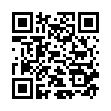|
This article is cited in 4 scientific papers (total in 4 papers)
Mathematical Modelling
Development of the two real signals blind separation method using fourth-order cumulants
N. Yu. Liberovsky, D. S. Chirov, V. S. Priputin
Moscow Technical University of Communications and Informatics, Moscow,
Russian Federation
Abstract:
Currently, blind signal separation methods are used in various fields of human activity, including wireless communication systems, radar and direction finding. This paper describes a method for blindly separating two material radio signals. Blind separation of signals implies that no information about the radio signal other than the received samples is unknown. The solution to this problem is based on two fundamental assumptions performed in real conditions. The first assumption is that the observed signal linearly depends on the source signal. The second assumption is that the radio sources are statistically independent. The general structure of blind source separation methods can be represented as a combination of a contrast function and a method for its optimization. In known methods, the solution of the SRS problem is carried out by iterative methods. As a criterion for the separation of radio signals in this work, we selected the reduction of the second and fourth order cumulants of the output signals to zero. The proposed analytical solution makes it possible to find a unmixing matrix W for any independent $s_1$ and $s_2$ signals in addition to those for which the fourth order cumulants are equal to zero. For such quantities, this method can only bring their mixture to two uncorrelated signals. In contrast to existing iterative methods, the proposed blind source separation method provides guaranteed convergence of the problem in given constraints. To test the operability of the method, a model of mixing and separation of signals was created, the efficiency of the method was tested at various powers of intrinsic noise in the receiving channels. As a result of modeling the proposed method, a dependence of the signal separation level on the power of intrinsic noise was constructed. The efficiency of the method was demonstrated with a ratio of input signal noise to useful signal power of less than 0,2 dB.
Keywords:
blind signal separation, digital signal processing, cumulant, mathematical modelling, separation level.
Received: 22.03.2020
Citation:
N. Yu. Liberovsky, D. S. Chirov, V. S. Priputin, “Development of the two real signals blind separation method using fourth-order cumulants”, Vestnik YuUrGU. Ser. Mat. Model. Progr., 13:2 (2020), 43–53
Linking options:
https://www.mathnet.ru/eng/vyuru542 https://www.mathnet.ru/eng/vyuru/v13/i2/p43
|
| Statistics & downloads: |
| Abstract page: | 141 | | Full-text PDF : | 70 | | References: | 12 |
|



 Contact us:
Contact us: Terms of Use
Terms of Use
 Registration to the website
Registration to the website Logotypes
Logotypes








 Citation in format
Citation in format 
